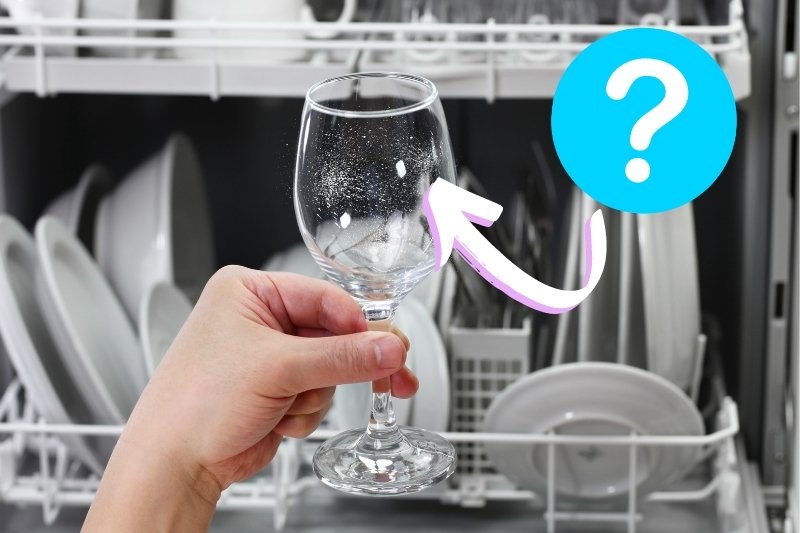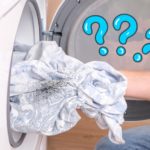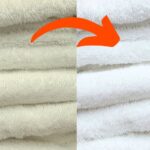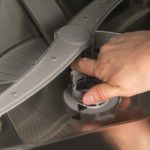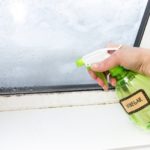Tired of reaching into your dishwasher for a plate or glass after it has just completed a cycle only to find everything in the machine covered in a chalky white residue? This list will help you narrow down the potential reasons why this is happening to your dishwasher!
There are a variety of reasons that this chalky residue can be accumulating on your dishes, and each of these reasons has a practical and easy-to-achieve solution.
The many reasons range from the effects of having hard water in your area to a potential issue with the water temperature in your machine. Before going over this list, it would be beneficial to check that your machine is in a good condition and all parts are working correctly.
Cause 1: Salt or Limescale Build-Up

A white residue can be caused by either salt or limescale building up in your machine.
The best way to figure out which of these two things is the cause would be to run your finger across the surface of a glass. If the residue wipes off then it is probably salt, but if not then there’s a high chance that it is limescale.
Limescale residue is harder to remove but can be lifted with vinegar.
If the cause is determined to be an excess of salt, then you may be adding too much dishwasher salt to your salt compartment. Be sure to read the instructions carefully before adding salt to your machine.
If you’re sure that you added the correct amount of salt to the compartment and the problem is still occurring, then it could be an issue with the washing machine. This will require further steps and perhaps a visit from a trusty plumber.
If the issue is limescale then you could try adding half a cup of vinegar into the machine before every load, which should counteract the effects of the hard water on your dishes.
Cause 2: Mineral Accumulation
Another issue that can be caused by living in a hard water area is a mineral build-up in your machine that can also cause a film on your dishes. The minerals from the water are left behind on your dishes and on the inside of your machine.
Over time the mineral accumulation in the machine will worsen and you will reach a point where you will need to properly clean the dishwasher. The best way to do this is to run a cycle without any dishes in the machine and add two cups of vinegar to the inside.
You can also wipe down the inside by hand with vinegar if you notice any areas that have a particularly bad build-up of residue.
The permanent solution to this problem would be to invest in a water softener, as the issue will remain if you continue to live in a hard water area.
Cause 3: Water Isn’t Hot Enough
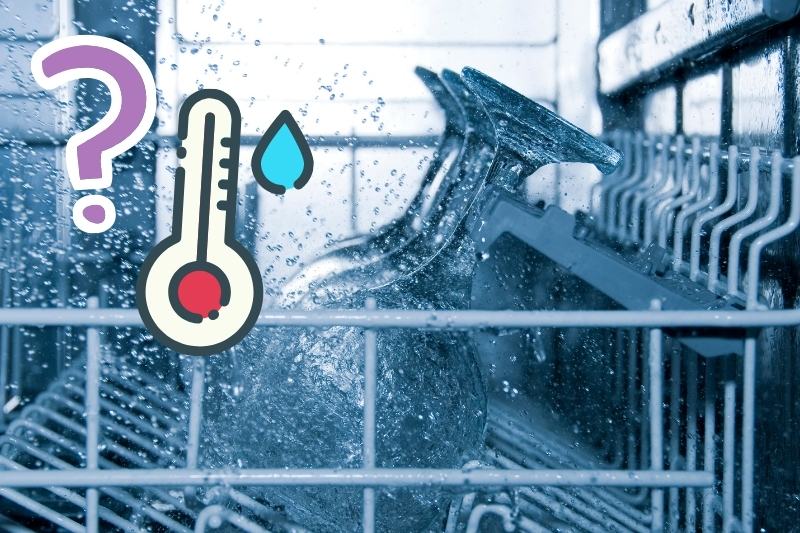
Another potential reason for a white residue on your dishes is that the water is not heating up enough in your dishwasher during the wash cycle.
If the water is too cold during the cycle, the soap will not dissolve as well as it should and will likely leave white marks behind on all of your dishes.
The issue here could be coming from your boiler or from the actual machine. If you haven’t noticed any other issues with the hot water in your household then it is likely to be a problem with the machine.
It is also possible that you are using too much soap and the machine is not able to dissolve it all during the cycle. Check the guidelines on your detergent before adding soap to your dishwasher and if you think this may be the cause then try to cut down on the amount that you add.
Cause 4: Detergent Hasn’t Dissolved Properly
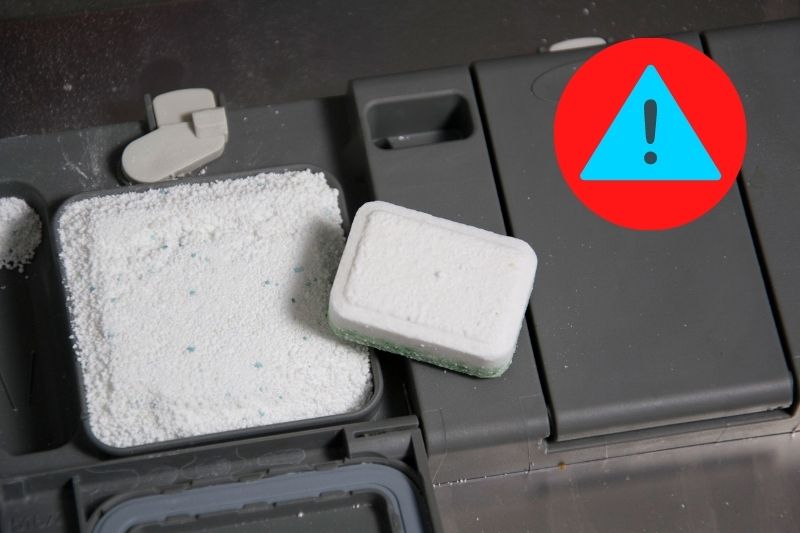
If you use a powdered detergent or detergent tablets, then it is also possible that these are not dissolving properly during the wash cycle and are leaving a chalky film all over your dishes.
It is even possible for permanent damage to be caused by something like this. If you scrape a fingernail down the side of a glass that has come out of the dishwasher with a residue that isn’t rinsing off, it may be something called ‘etching’.
Etching is what happens when the glass of the dish is worn or scratched. This can be caused by the undissolved soap bits. This problem can be solved by switching over to a liquid detergent, but the etching cannot be undone.
Etching could be worsened by the brand of detergent you use as well so if you find that it is still happening even after switching to a liquid detergent, then it may be worth trying another brand.
Cause 5: Dishes May Need a Rinse Before the Cycle
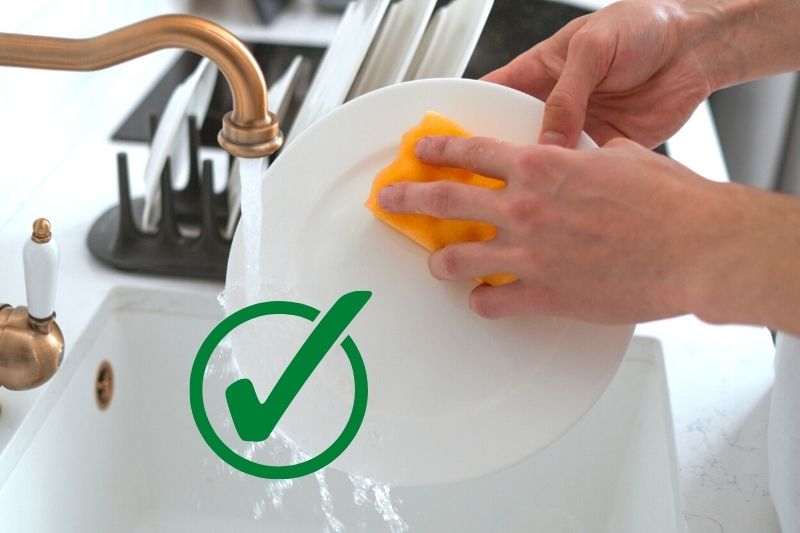
Sometimes the residue left on your dishes could be a result of too much food or grease being left behind on the dishes when they are added to the machine. If you think this could be the cause, try giving your dishes an extra rinse before you put them in the dishwasher.
Be cautious while rinsing dishes though as etching can also be caused by washing dishes too well before putting them in your dishwasher. Many dishwashing soaps have a harsh alkaline salt in them and so will need the oils and leftover bits of food that come off the dishes to neutralise it.
If your dishwasher has a compartment where it traps any bigger chunks of food and other debris then it would also be beneficial to clean this out properly, in case the accumulation is preventing the detergent from doing its job properly. Vinegar is a useful cleaning product for this space.
Conclusion
A chalky film can be very frustrating to discover on your dishes when you open your dishwasher expecting to find everything glimmering and clean.
If you are still concerned about this happening even after you’ve made a few changes based on the list above, you can also try including a citric acid additive or a rinse aid alongside your detergent during your wash cycles.
It is always also worth checking that there aren’t any build-ups of soap in certain compartments of your machine.
If you see that the detergent compartment has a bit of soap that has gotten caked up over time and is stodgy with the steam that hangs around in the machine, it may be worth cleaning out with some vinegar.

An adventurous book lover with an animal obsession and a proclivity for travel and spontaneity. Used to passionately despise cleaning but has grown to enjoy it thanks to learning all the best tricks and shortcuts to guaranteeing a stress-free routine and a spotless home.
